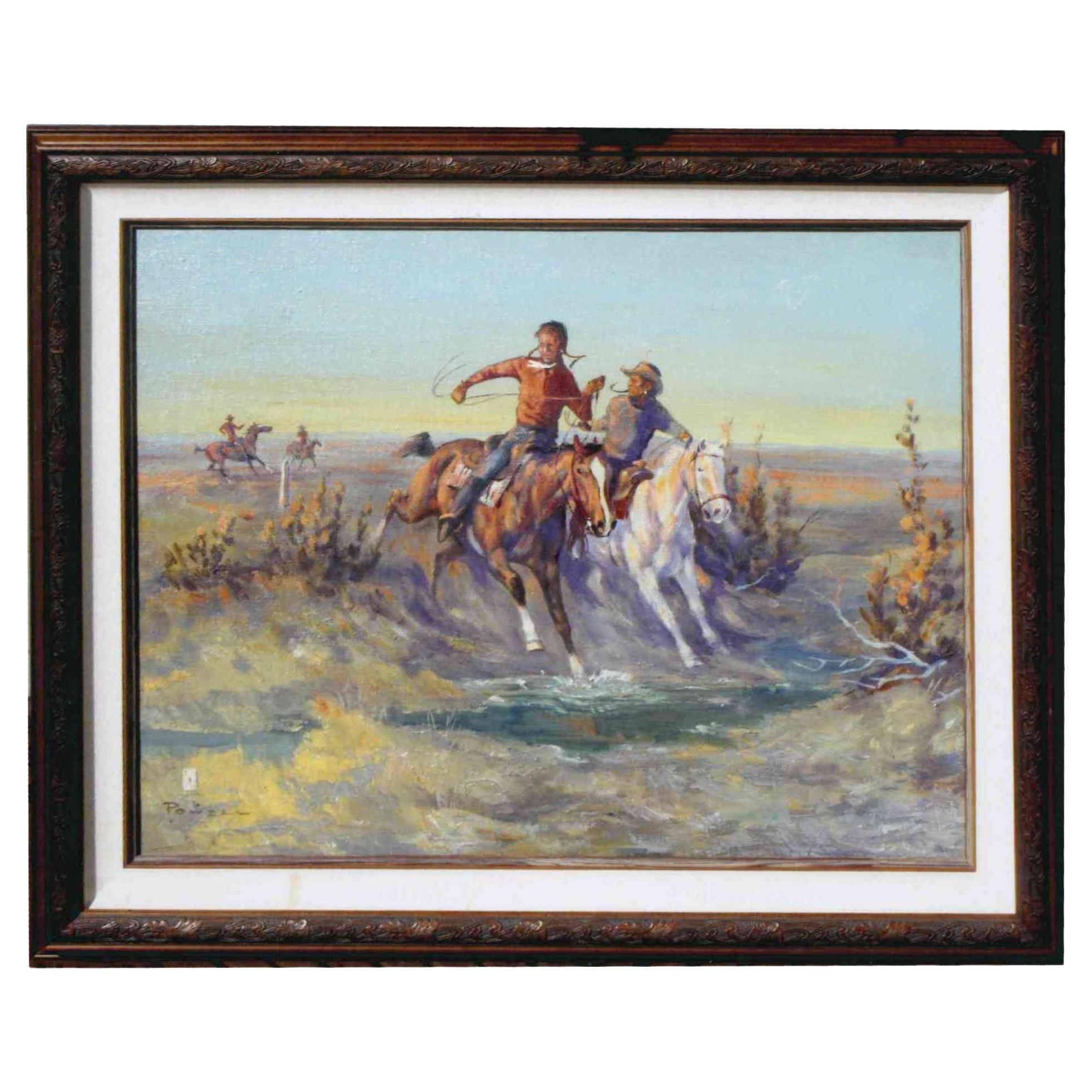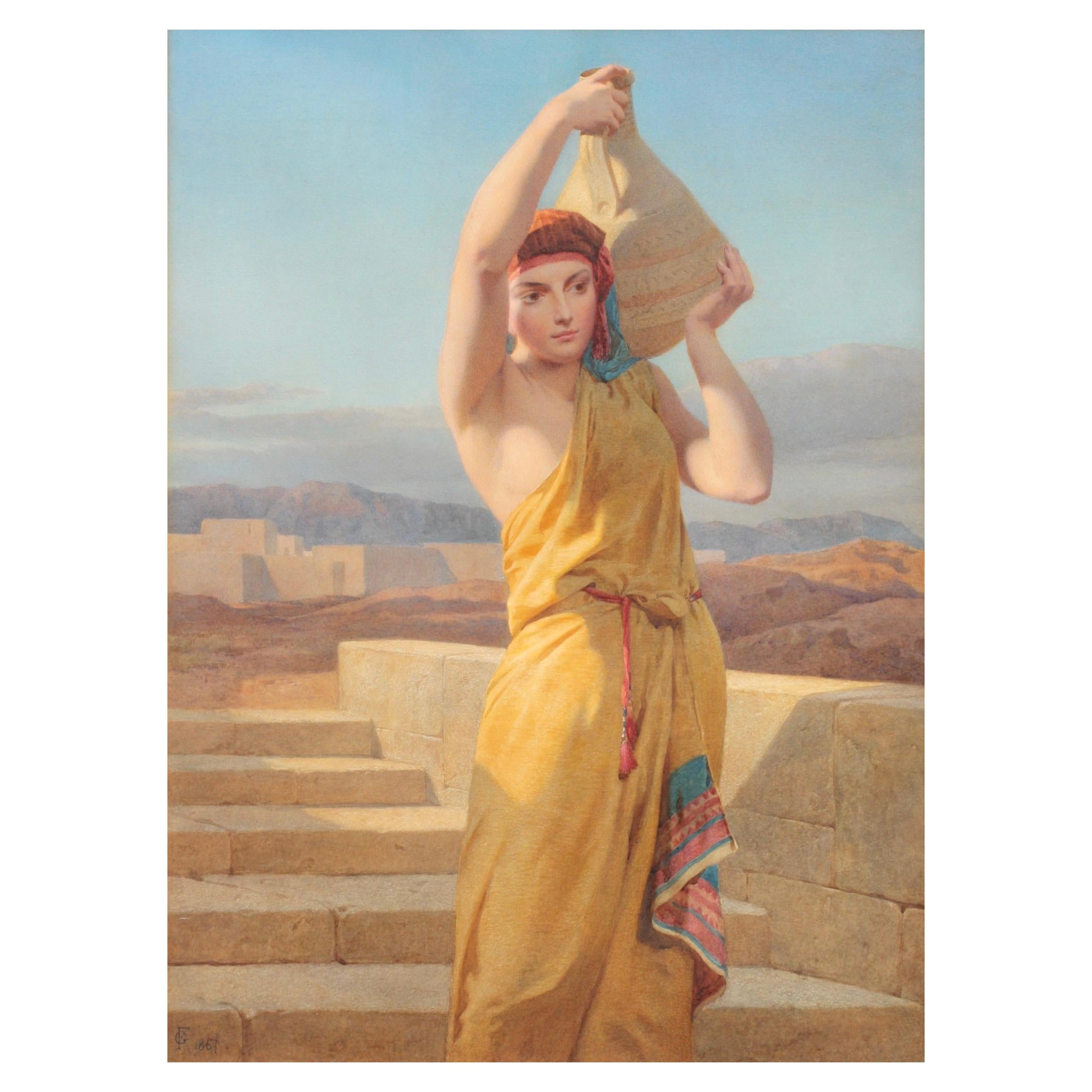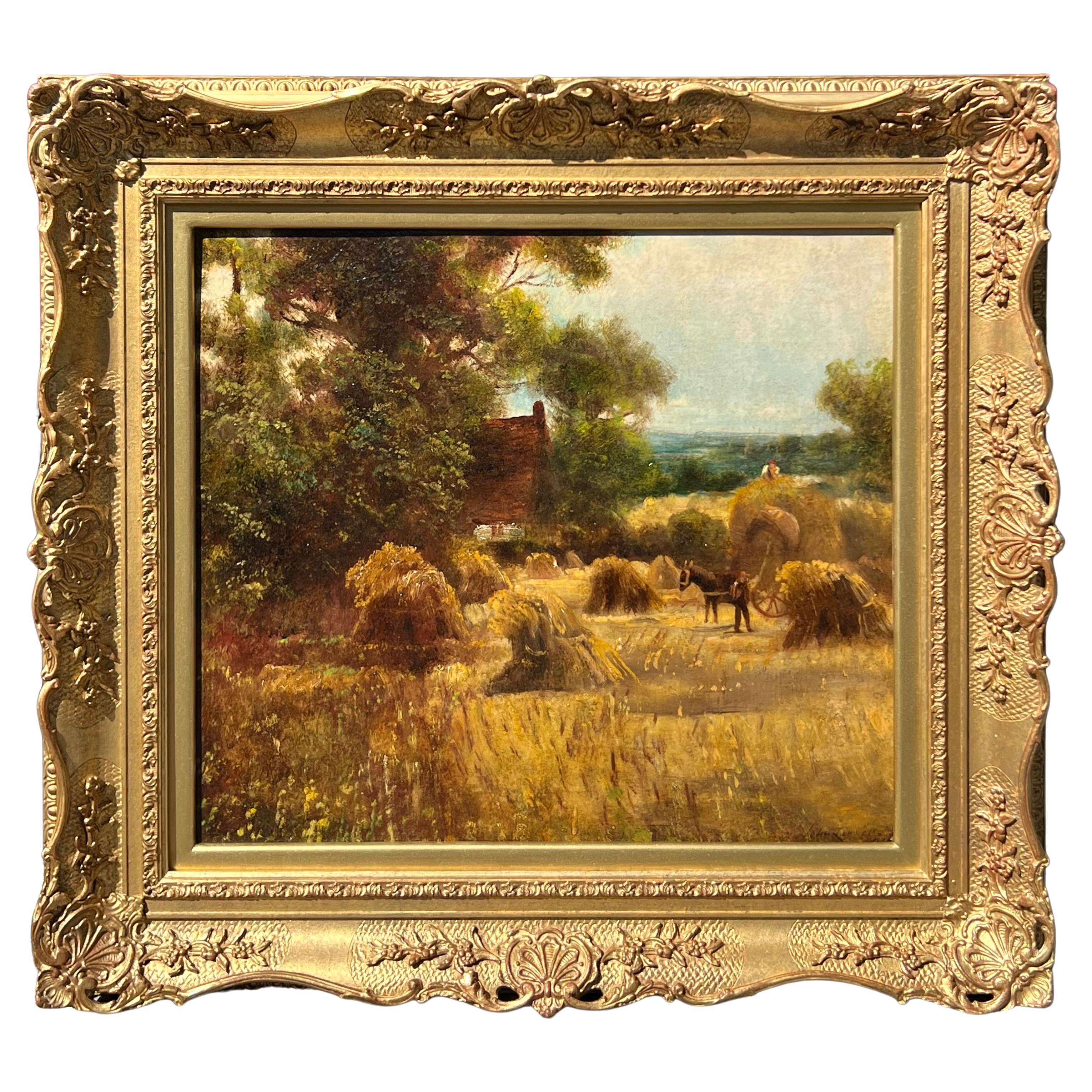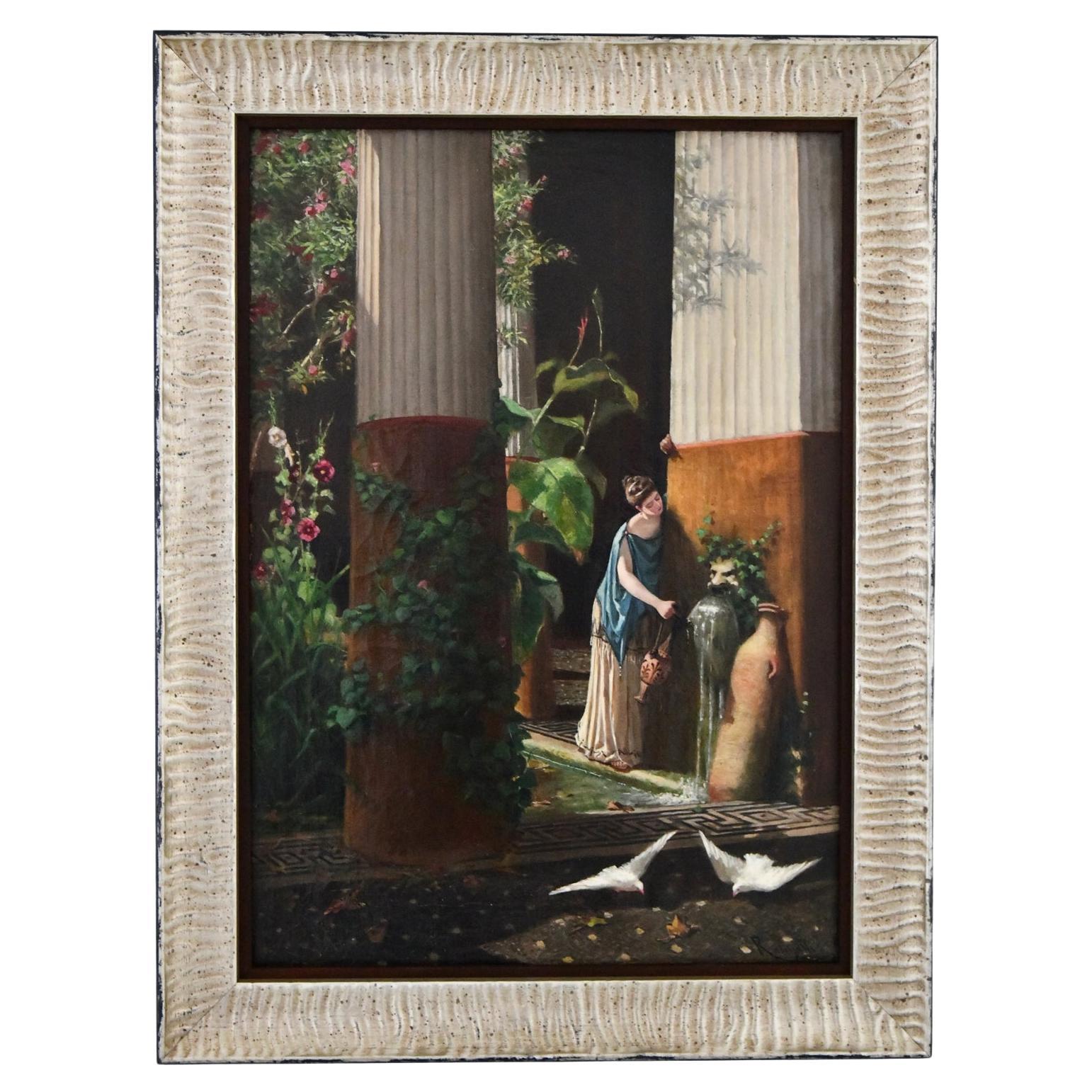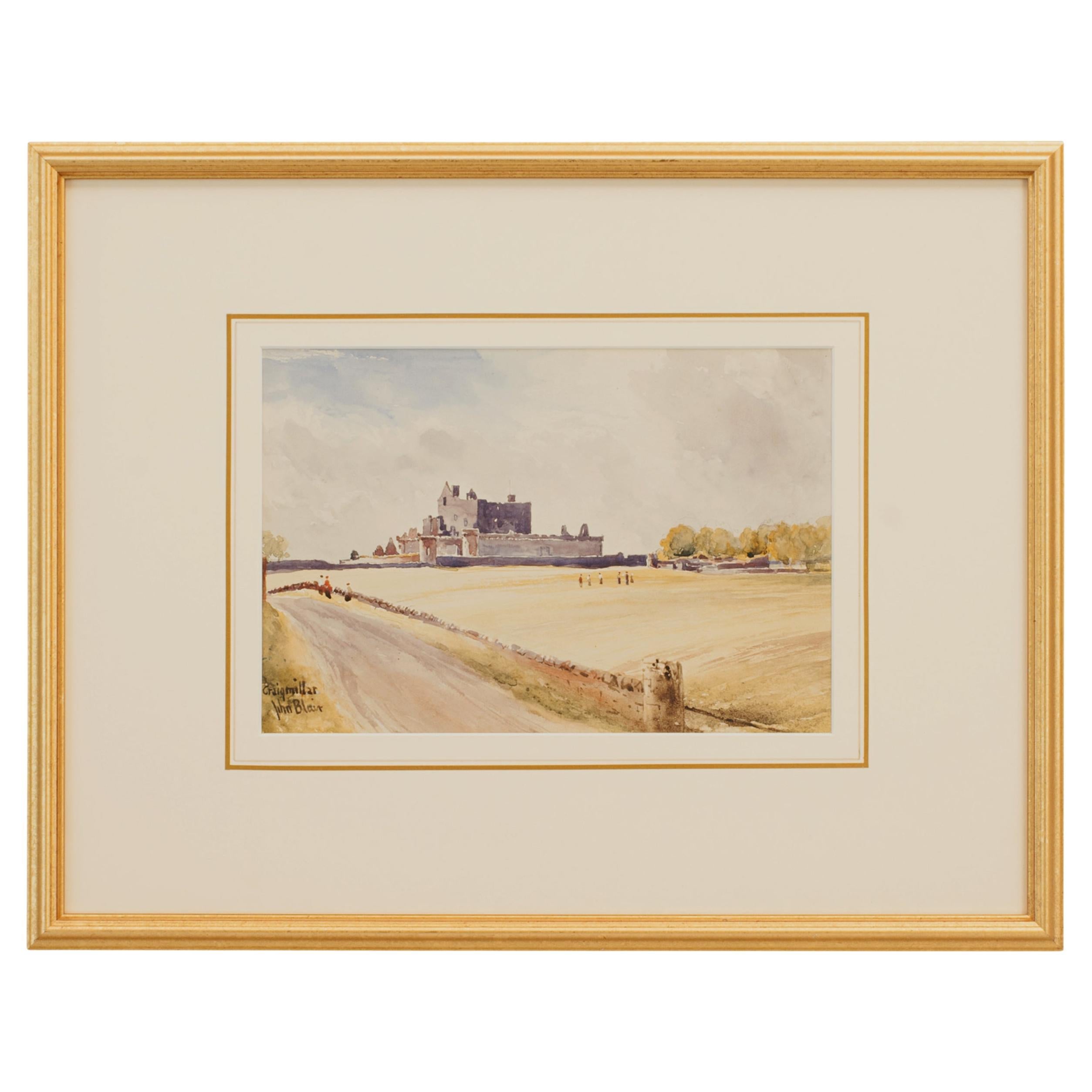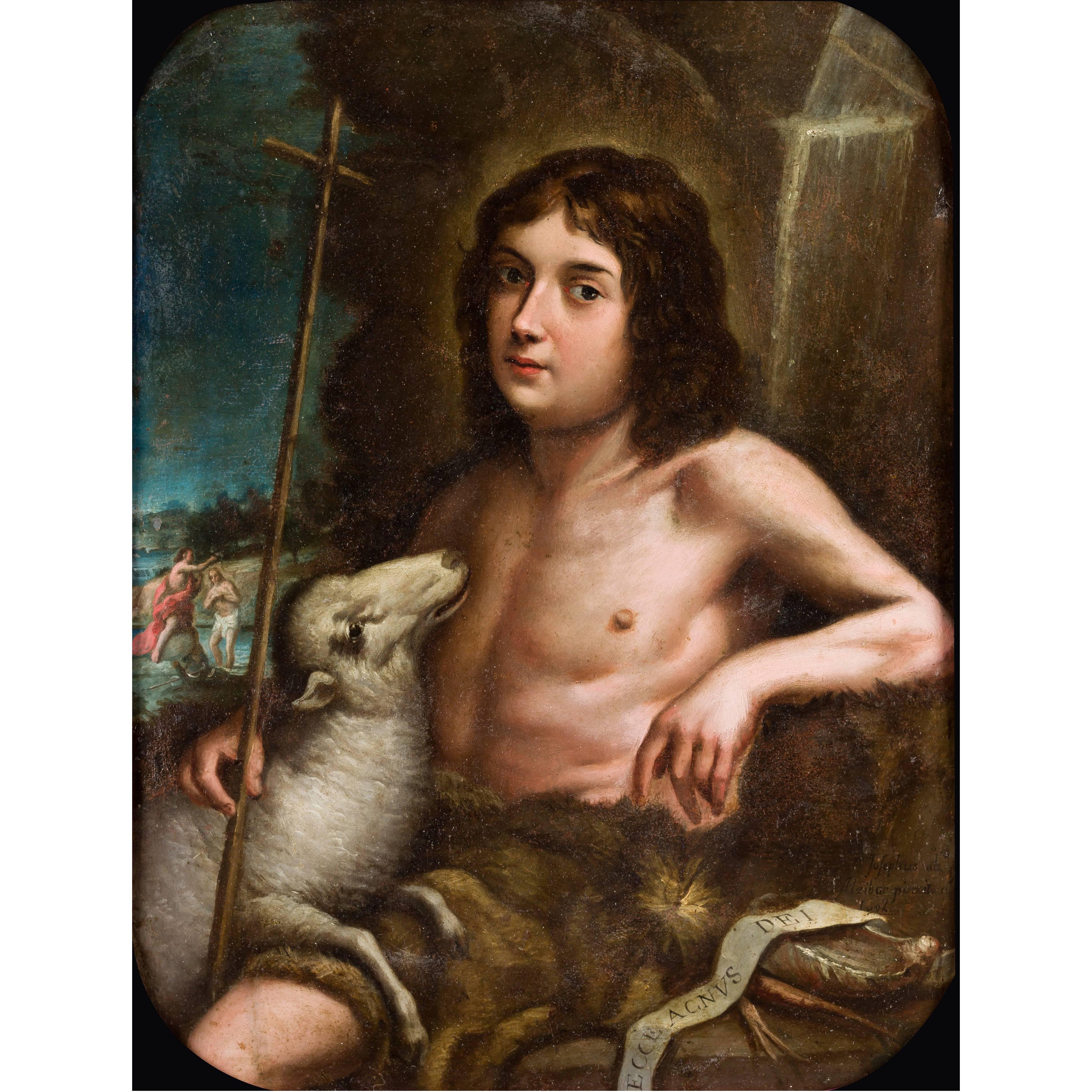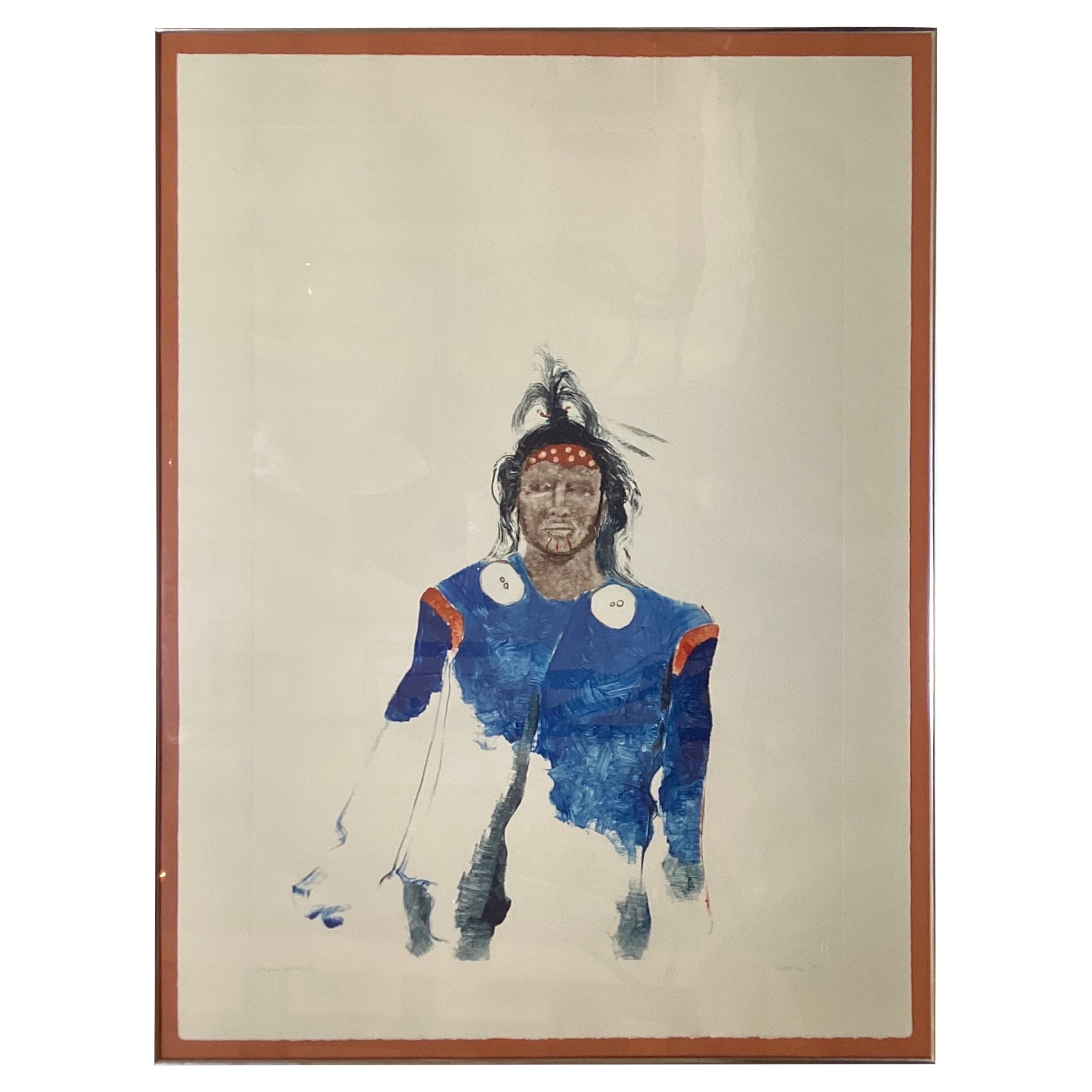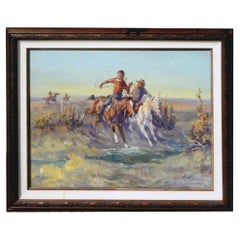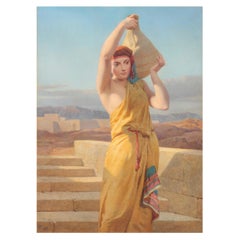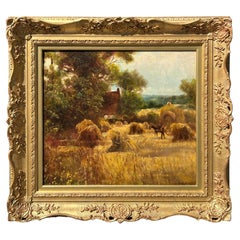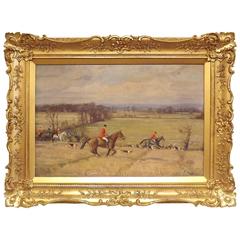
"The Chase" by John Sanderson Wells
View Similar Items
1 of 4
"The Chase" by John Sanderson Wells
About the Item
- Dimensions:Height: 16 in (40.64 cm)Width: 24 in (60.96 cm)Depth: 3 in (7.62 cm)
- Style:Sporting Art (Of the Period)
- Place of Origin:
- Period:
- Date of Manufacture:1900
- Condition:
- Seller Location:Wiltshire, GB
- Reference Number:Seller: NL331stDibs: LU134724855303
You May Also Like
- "Chasing the Blackfeet" Original Oil Painting by Ace PowellLocated in Coeur d'Alene, ID(1912-1978).Oil on canvas; 24" x 32". Son of a cowboy, Powell was raised in Apegar, MT, on the south side of Lake McDonald. His father was a stable boss, guide and tracker for Glacier National Park. As a boy, he watched Charles Russell paint in the Bull's Head Lodge in Apegar. PERIOD: Mid 20th century ORIGIN: Montana SIZE: 24" x 32" Biography: Apgar in Glacier Park was the gathering place for multitudes of artists drawn by the scenery, possible employment with Great Northern Railroad and sales to wealthy visiting art patrons. Bull Head Lodge, Charles M Russell summer home near by, was focus of the developing school. One can only guess at how great artists like Russell, Joe de Yong and host of others interacted with the young teen age wrangler who was likely first trying his hands with the tools of the art trade. Here though the seed was planted that would grow and lead Powell upon his own path and would blossom into over ten thousands works of arts drawn from first hand experiences along with those learned from firelight tales. Powell, like many others upon the frontier, followed the "Rounder" path of marriages, army service, hard drinking and cowboying, but like the lonely rider in many of his paintings whose horse is finally tied to the hitching post of a Northern Plains ranch cabin he found his home near Glacier National Park in Hungry Horse Montana . His home here from the 1950's till the 60's was like Charles Russell's with artists coming and going including his wife Nancy McLaughlin and his own son David Powell who started his trail to a Cowboy Artist of America induction here. After a fire in 1964, Ace Powell...Category
Mid-20th Century American Paintings
MaterialsPaint
- Frederick Goodall "Returning from the Well"By Frederick Goodall R.A.Located in West Palm Beach, FLFrederick Goodall (British, 1822-1904) "Returning from the Well". Initialed FG monogram, and dated 1867 l/l. Watercolor on paper, with touches of varnish. Provenance: Sotheby's, 11 Dec 03, Property of Seymour Stein.Category
20th Century Paintings
MaterialsCanvas
- "Baling the Hay" by John LinnellBy John LinnellLocated in Wiscasset, MEFall farm scene painting by John Linnell, oil on board signed and dated in the lower right. The painting measures 26.5" x 28.5" including the fram...Category
Antique Mid-19th Century British Neoclassical Paintings
MaterialsPaint
- "Beneath the Surface" by John W. McCoyBy John W. McCoyLocated in West Chester, PAAbstract watercolor painting of stones underwater in a stream.Category
20th Century American Post-Modern Paintings
- Art Nouveau painting lady at the well by Roberto Rasinelli.By Roberto RasinellLocated in Antwerp, BEArt Nouveau painting lady at the well by Roberto Rasinelli. Oil on canvas. Contemporary silver leaf frame. Italy ca. 1890. Roberto Rasinelli, Rome, 1840–1910 Italian painter, mainly painting landscapes and genre scenes, in oil and watercolor. He often painted his landscapes on site, outdoors. Dictionnaire des peintres, sculpteurs, dessinateurs et graveurs E. Benezit. Gründ. Roberto Rasinelli: He was for many years a resident of Bologna. He completed his studies in Rome at the Academy of Fine Arts of St Luke. He displayed in 1877 at the National Exhibition: Buon consiglio and L'età delle rose. In 1880 at Turin, he displayed: La conca del pranzo; and in 1883 at Rome and 1884 at Turin: Lo Stabilimento dei bagni a Ripetta (I Bagni nel Tevere). He painted rural scenes from the Lazio. He painted Aqueduct of Claudius, exhibited in 1886 at Florence. Moving to Bologna, he painted the bolognese countryside: Giornata d' inverno. Other paintings of this artist are: L' ora del pasto; Ruderi; Lungo il Tevere; Giovinezza; Ora triste. In later years, he lost his sight, and after he died he...Category
Antique 1890s Italian Art Nouveau Paintings
MaterialsCanvas
- Golf Painting by John Blair, Craigmillar Park G CLocated in Oxfordshire, GBCraigmillar Park Golf Club Watercolour, John Blair. An atmospheric original watercolour of Craigmillar Park Golf Links in Edinburgh by the Scottish artist John Blair (1849-1934). Craigmillar Castle from which the club derives its name from is clearly seen in the background and the painting is signed to the lower left corner. Craigmillar Castle was a haunt of Mary Queen of Scots, the world's first recorded lady golfer. How ironic then, that since the golf club's inception equality of the sexes was the rule at Craigmillar Park. John Blair was a Scottish painter, predominantly of watercolour landscapes. Of humble beginnings in Berwickshire, he moved to Edinburgh to study and spent the rest of his life there. His paintings mainly reflect the landscapes around him, both of urban settings and also of the castles, sea and lochs of the Borders. As well as his original work, his paintings were viewed by a wide audience in the form of picture postcards, book endpapers and illustrations. Taken from Craigmillar Park Golf Club website:- Craigmillar Park Golf Club was constituted in 1895 and moved to its present location in 1907. It was extended to 18 holes (designed by James Braid) in 1927. On 12th of January 1895 the Scotsman newspaper carried the following "birth" announcement : "NEW GOLF COURSE IN THE SOUTH SIDE OF EDINBURGH. A nine-hole golf course is being formed at Craigmillar Park and is expected to be ready for play in February. A lease of the ground which extends from Crawfurd Road to Lady Road has been obtained from Captain Gordon Gilmour of Liberton and Craigmillar. The principal entrance will be from Crawfurd Road within three minutes' walk of the Craigmillar Park car terminus and Newington Suburban Station. The course is about a mile in length and has been laid out by Mr. Day of Musselburgh, who has given a very favourable report of the suitability of the ground for the purpose. Already about 150 ladies and gentlemen have been admitted as members of the club." Many, perhaps most, of the new clubs created about the same time as Craigmillar Park were (and some continue) as male preserves. It is clear that from the outset equality of the sexes was the rule at Craigmillar Park, although it was not until 1914 that the subscriptions were equalised. The course was situated in an area of land close to Newington Railway Station and the Newington Bus and Tram Terminus and was thus, easily accessible. In those days there was very little building development between the course and the iconic Craigmillar Castle from which the club derives its name. The castle was a haunt of Mary Queen of Scots, the world's first recorded lady golfer. How ironic then, that since the golf club's inception, ladies have had equal status with men and there was no gender barrier to any office. This was in an age when golf clubs were regarded as male preserves. In 1914, ladies started paying exactly the same subscription as their male counterparts and this has remained right up to the present day. When you consider that all women did not get the vote until 1928, Craigmillar Park Golf Club were indeed trendsetters! Despite the club's early success, with 400 members and a waiting list, they were dealt a blow when their course at Newington was taken over for housing development. They decided, rather than to disband, to relocate the golf course to the eastern slopes of the Blackford Hill in 1907. Once again the close proximity of Blackford Railway Station and Bus Terminus were factors in their decision making. Another factor in choosing Blackford Hill was the potential for increasing the length of the 9 holes that had been played for in the course at Newington and possibly even converting the new course to 18 holes at some future date. This is in fact what happened and James Braid designed a splendid 18 hole course which officially opened in 1927. The new course was a real test of golf with no two holes being the same. The course boasts marvellous views over Edinburgh and Fife and down the coast to the Berwick Law, Bass Rock...Category
Antique Early 1900s European Sporting Art Sports Equipment and Memorabilia
MaterialsPaper
Recently Viewed
View AllMore Ways To Browse
Sanderson Wells
Antique Chest With Mirror
19th Century Carved Cabinet Door Designs
Chest Of Drawers Leather Top
French Empire Chest Commode
Louis Xvi Walnut Commode
English 19th Century Kitchen Table
Vintage X Base Desk
Enclosed Glass Case
Antique Door Rosette
Antique Blue Painted Cabinets
Antique Brass Paint For Wood
Vintage Christian Dior Glasses
George Iii Mahogany Chest On Chest
Ornate Brass Cabinet
Mid Century Modern Metal Bed
Red Velvet Top
Low Storage Chest
